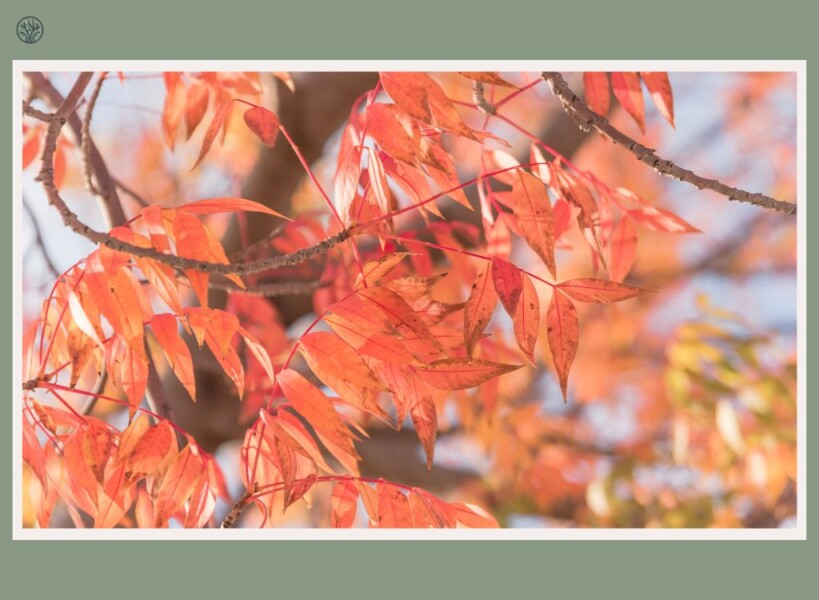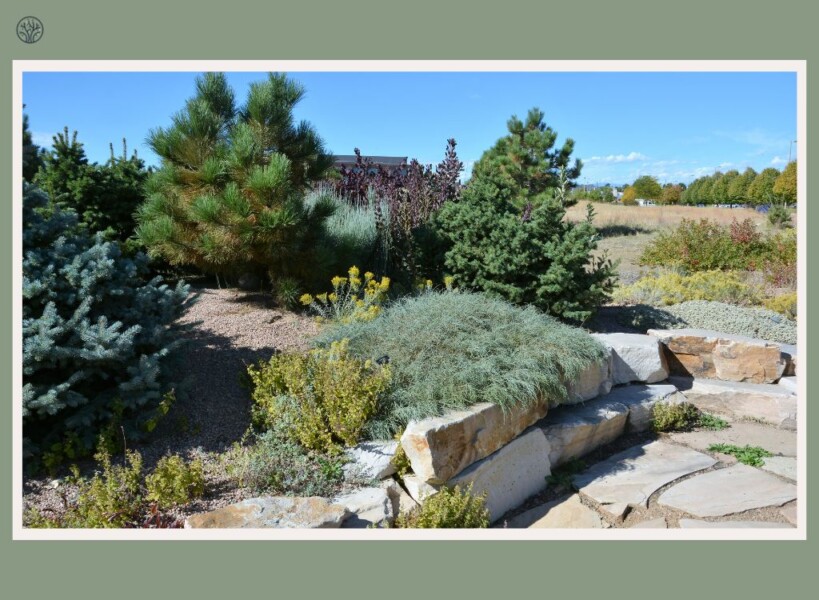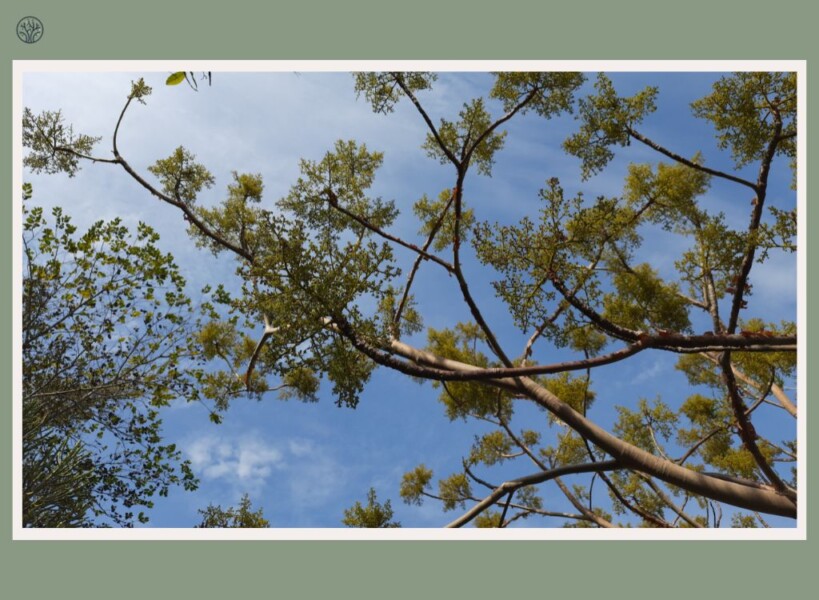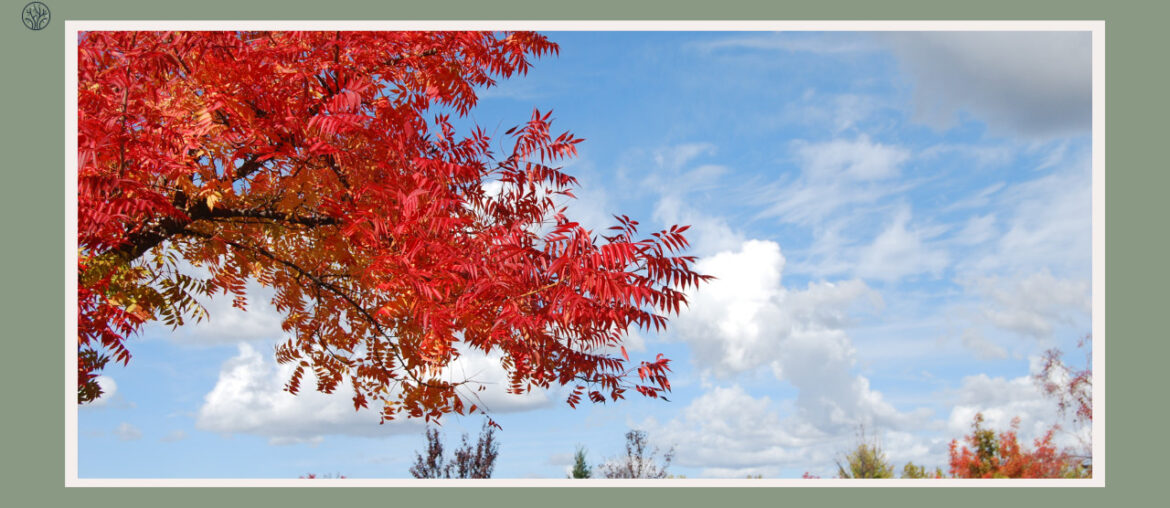The Chinese Pistache tree is a remarkable plant that can transform any landscape with its stunning fall colors. It may not look like much when it’s young, but as it grows, the tree develops a graceful shape and a brilliant canopy of red, orange, and yellow leaves.
In this article, we will explore the pros and cons of the Chinese Pistache tree to help you decide if the Chinese Pistache is an ideal match for your garden.
Key Takeaways
- The Chinese Pistache can live for a very long time, sometimes more than a hundred years, making it a lasting part of the landscape.
- This tree is beautiful, easy to care for, and can adapt to different types of soil.
- Despite its hardiness, the tree can be susceptible to diseases like verticillium wilt and root rot.
- Young Chinese Pistache trees are vulnerable to frost damage, making them less suitable for regions with harsh winters.
- The tree’s large size at maturity requires ample space, making it less ideal for smaller yards.
- Female trees produce fruits that can create litter, while male trees release pollen, which can be a concern for allergies.
Benefits Of Chinese Pistache Tree
Below are some of the potential advantages of the Chinese Pistache tree for you to make an informed decision:
1. Long Lifespan
The Chinese Pistache trees are a resilient and robust species. This enduring quality makes them a wise choice for those looking to invest in a landscape feature that will stand the test of time. They can survive for many decades, sometimes even more than a century. One of the reasons why the Chinese Pistache trees can live so long is their amazing adaptability. The trees can grow in different types of soil and cope with changing weather patterns.
Moreover, this longevity offers a range of benefits. For property owners, it means that they can enjoy the beauty and value of a mature Chinese Pistache tree for a long time. A mature Chinese Pistache tree not only enhances the aesthetic appeal of a property but also contributes to its value. For the environment, a long-living tree like the Chinese Pistache is important for capturing carbon, which helps reduce the impact of climate change over the years.
2. Low Maintenance
One of the most appealing attributes of the Chinese Pistache trees is their low maintenance requirements. This is great for people who love a green landscape but may not have a lot of time or money for intensive tree care. Once established, these trees do not require much attention, making them a practical choice for both novice and experienced gardeners.
The Chinese Pistache trees are hardy and can grow in a variety of soil conditions. This means that they do not need a lot of soil amendments or special fertilizers. Additionally, they are also resistant to many common pests and diseases, which means that they do not need a lot of treatments or interventions. This helps you save both time and money on maintenance.
Watering needs for the Chinese Pistache are also modest, especially once the tree is well-established. This low-maintenance nature not only makes the caretaker’s life easier but also supports sustainable gardening practices.
3. Aesthetic Appeal

The Chinese Pistache tree is a beautiful tree that can make any landscape more attractive. Throughout the seasons, this tree displays a dynamic range of colors and textures, making it a visually captivating addition to any garden or public space.
In the fall, the tree’s foliage turns into a breathtaking display of fiery reds, oranges, and yellows, creating a gorgeous scene that can match any autumn landscape. In spring and summer, the tree’s lush green canopy provides a cooling shade, making it an ideal spot for relaxation and outdoor activities.
The tree’s overall structure, with its rounded and spreading canopy, also contributes to its aesthetic appeal. This shape not only gives a lot of shade but also makes the landscape more elegant and impressive.
4. Ideal For Xeriscaping

The Chinese Pistache’s drought tolerance is a key feature that makes it suitable for xeriscaping. When mature, these trees can survive mostly on natural rainfall. This makes them an excellent choice for water-conserving landscapes, helping to reduce the overall environmental impact of gardening and landscaping. Additionally, the tree can also grow in different types of soil and it is very strong and healthy, which makes it even better for xeriscaping.
Drawbacks To Consider Before Planting
Despite the benefits, there are several cons worth considering if you plan to have them in your garden.
1. Vulnerability To Diseases
While the Chinese Pistache tree is generally robust and resistant to many pests, it is not entirely immune to diseases. One of the key drawbacks to consider before planting this species is its vulnerability to certain ailments.
One common issue is verticillium wilt. This disease can be particularly challenging to manage once it infects a tree. It affects the vascular system of the tree, causing the leaves to wilt, turn yellow, and sometimes die.
Another disease that can affect Chinese Pistache trees is root rot, which happens when the soil is too wet. This condition leads to the decay of the tree’s root system, which makes it hard for the tree to get water and nutrients.
2. Sensitivity To Extreme Cold
Even notoriously hardy plants like cacti cannot survive extreme cold, so you shouldn’t be surprised that Chinese Pistache trees cannot tolerate winter, particularly when young. This makes it hard to grow and manage this tree in regions that have harsh winters or cold snaps.
Young Chinese Pistache trees are especially vulnerable to frost, which can affect their growth and overall health. Frost can damage the tender tissues of new growth, leading to dieback and potentially affecting the tree’s structural integrity. In areas with very cold winters, you might need to keep young trees warm with mulch and cloth. As the tree matures, it typically gains more resilience to cold temperatures. However, sudden and extreme cold can still be a problem.
3. Oversized

Another factor to consider when planting a Chinese Pistache tree is how big it can get when it is fully grown. This species can grow quite large, reaching up to 40 feet high and 30 feet wide. This makes it not very good for small yards or gardens where there is not much space.
The tree’s large canopy, while beautiful, can also cause some problems. It may get in the way of power lines, buildings, or other things if it is not planned and managed well. Also, the big root system, which helps support the tree, can damage sidewalks, driveways, and underground pipes.
4. Initial Awkward Growth
The Chinese Pistache trees are also known for their somewhat awkward growth pattern in their early years. Young trees often grow asymmetrically and may appear unbalanced or misshapen. This irregular growth can be a problem for people who want a tree that looks nice and neat right away.
However, similar to a bonsai tree, with proper pruning and care, the tree’s form can be guided and improved over time. This initial awkward phase is temporary, and with patience and proper care, you can help the tree mature into a beautiful canopy.
5. Messy
Another drawback of the Chinese Pistache trees, particularly female trees, is that they can be messy. Female trees produce clusters of small, berry-like fruits that can create a significant amount of litter when they fall. This can be annoying on lawns, walkways, and patios, and it needs to be cleaned up often. Additionally, the sticky nature of the fallen fruits can make cleanup challenging and may stain sidewalks or other surfaces.
To avoid this problem, you can opt for a male Chinese Pistache tree, which does not produce fruits. However, it’s important to note that male trees produce pollen, which can be a concern for those with allergies.
FAQs
Are Chinese Pistache Trees Messy?
Yes, Chinese Pistache trees can be messy, especially the female ones. They produce small, berry-like fruits that can create quite a mess around the tree when dropped.
How Big Do Chinese Pistache Trees Get?
Chinese Pistache trees can get very big when they grow up. They can reach up to 40 feet tall and 30 feet wide. This means that they need a lot of space to grow well, both up and out.
Do Chinese Pistache Trees Have Invasive Roots?
Chinese Pistache trees have big roots, but they are not usually invasive. However, like many big trees, their roots can spread a lot and sometimes cause problems with sidewalks, driveways, and pipes if they are planted too close.
What Is The Difference Between Male And Female Chinese Pistache Trees?
The main difference between male and female Chinese Pistache trees is in their flowers and fruits. Male trees make pollen, which can bother people with allergies when the tree blooms. Female trees make fruits, which can make a mess when they fall.









